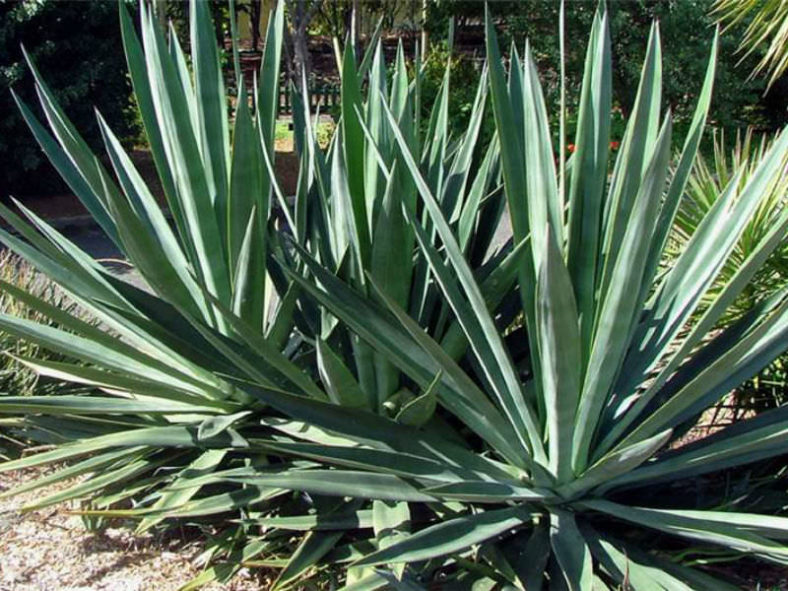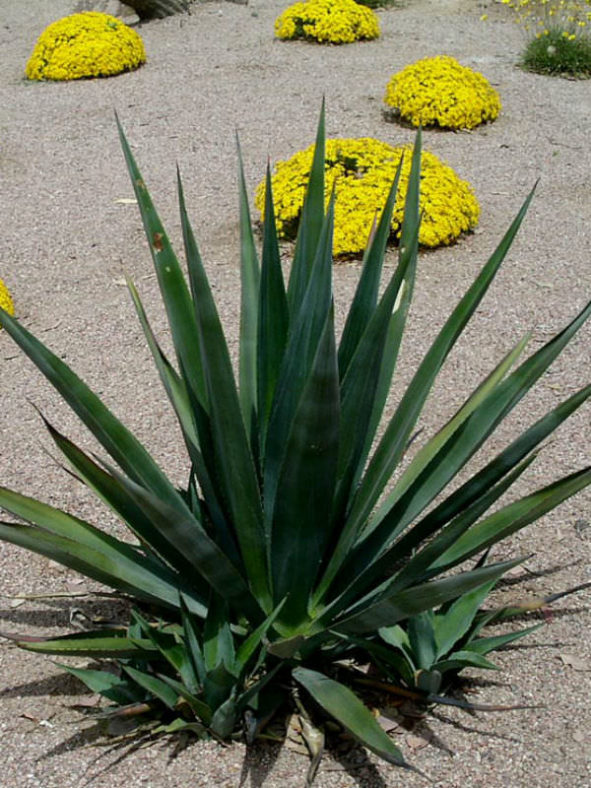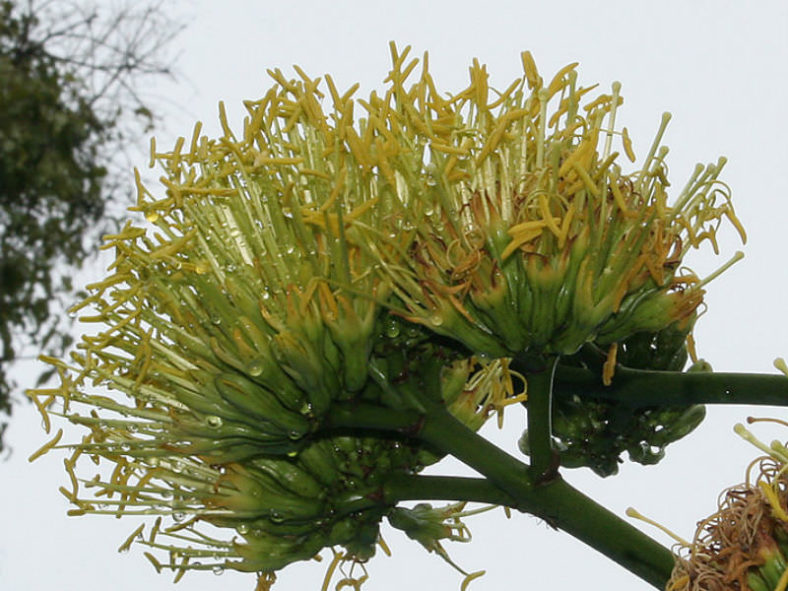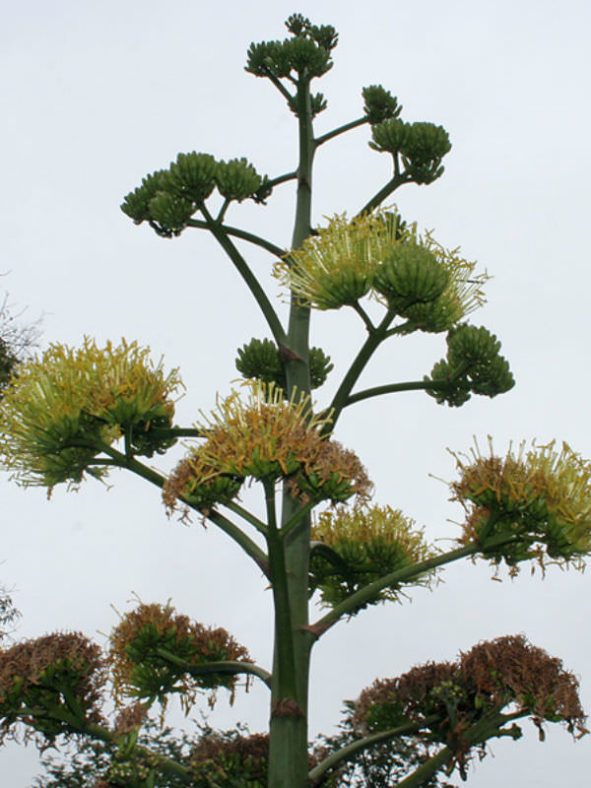Scientific Name
Agave sisalana Perrine
Common Name(s)
Hemp Plant, Mescal, Sisal, Sisal Agave, Sisal Hemp
Synonym(s)
Agave rigida subsp. sisalana, Agave rigida var. sisalana
Scientific Classification
Family: Asparagaceae
Subfamily: Agavoideae
Genus: Agave
Etymology
The specific epithet "sisalana" (pronounced "sis-al-AY-nuh") refers to Sisal, a town in Yucatán, Mexico. During the Spanish colonial era, Sisal was the main port of the region and the hub of the henequen boom, from which this species was originally shipped.
Origin
The exact origin of Agave sisalana is uncertain. It was traditionally believed to be native to the Yucatán Peninsula in Mexico; however, there are no existing records of botanical collections from that region. This species is widely cultivated and has become naturalized in many other countries.
Description
Agave sisalana is a succulent plant that forms short-stemmed rosettes of stiff, sword-shaped leaves with spinless margins and a red-brown terminal spine. The stem can grow up to 3.3 feet (1 m) tall. The leaves are glaucous when young, becoming dark blue-green with age. They can measure up to 5 feet (1.5 m) in length and 6 inches (15 cm) in width.
The inflorescence is a large panicle with flowers arranged in dense clusters on the terminal portion. It can grow up to 20 feet (6 m) tall. The flowers are yellowish-green with reddish filaments. They do not produce seeds but form bulbils, which are used for propagation. The bulbils are borne in the axils of the bracteoles of the inflorescence after flowering.

Hardiness
USDA hardiness zones 9b to 11b: from 25°F (-3.9°C) to 50°F (10°C).
How to Grow and Care
Agaves are not difficult plants to grow. They're slow-growing and dramatic and will even thrive on a bit of neglect. If you're the type of person who likes to fuss with houseplants and water a lot, Agave is probably not the plant for you. On the other hand, if you're the type of person who likes to set it and forget it, and you have a sunny window, Agave might be the ideal choice. Be aware that some large varieties will eventually outgrow your room (unless you have a large greenhouse), and Agave can be aggressive. They have irritating sap and sometimes very sharp thorns that can injure small children and even pets.
Generally, Agaves do not require repotting every year. Most species commonly found in cultivation grow very slowly and take a long time to outgrow their pot. It's also best to handle your Agave as little as possible since they do not like to be disturbed.
See more at How to Grow and Care for Agave.
Links
- Back to genus Agave
- Succupedia: Browse succulents by Scientific Name, Common Name, Genus, Family, USDA Hardiness Zone, Origin, or cacti by Genus
Photo Gallery
Click on a photo to see a larger version.


